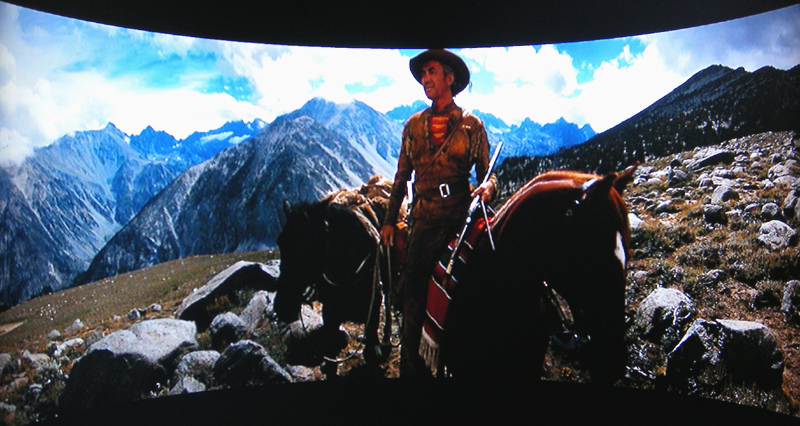May 2009 Archives
 Seeing the reviews of the latest Dan Brown phantasmagoria, , I am moved to post my best effort regarding this author and the films that he spawns. It was written about The DaVinci Code but will do perfectly wellas a comment on Angels and Demons.
Seeing the reviews of the latest Dan Brown phantasmagoria, , I am moved to post my best effort regarding this author and the films that he spawns. It was written about The DaVinci Code but will do perfectly wellas a comment on Angels and Demons.BIRTH OF A BLOCKBUSTER
The following is a transcription of the pitch session for Dan Brown's next novel, The Botticelli Botch. Present are the author, his new agent Bizzy Boca, his new publisher Ernst Kluliss, and (getting in on the ground floor) the famous film producer Sam Schnellgeld ...
Continue reading Dan Brown Redux.
May 22, 2009 12:12 PM
| Permalink
 It's not historically accurate, we all know that now. But How the West Was Won (1962) is nonetheless historic. One of the very few feature films to utilize the short-lived Cinerama technology, it is now available on DVD. And if you have access to the Blu-Ray version shown on a sizable flat screen, you will be in the historic position of watching Cinerama at home.
It's not historically accurate, we all know that now. But How the West Was Won (1962) is nonetheless historic. One of the very few feature films to utilize the short-lived Cinerama technology, it is now available on DVD. And if you have access to the Blu-Ray version shown on a sizable flat screen, you will be in the historic position of watching Cinerama at home.That is, you will experience something of the eye-popping illusion and eye-crossing headache experienced by the original audiences who flocked to Cinerama in the late 1950s and early 1960s. The most salient aspect of this is a form of tri-ocular vision.
Instead of using one camera and one projector to create a single focused image on a screen roughly square in shape, Cinerama used three cameras and three projectors to create a panoramic image on a huge wide curved screen. Audiences felt they were actually in the landscape, as opposed to looking at it.
A similar effect is now achieved by IMax by enlarging the image until it is picked up by the viewer's peripheral vision. But Cinerama was weirder than IMax, because it had three different lines of perspective leading to three different vanishing points.
In one famous scene, the characters are in front of a cabin with a road forking off on either side, and your eye tries in vain to follow each road separately while also focusing on the house. Ouch.
Not only that, but the actors frequently look and talk past each other, because basically they are in separate films spliced together, and the splice is never quite good enough.
All of which makes How the West Was Won utterly fascinating. And Jimmy Stewart is mighty fine, as always.
Best of all, the DVD contains an excellent documentary about the history of Cinerama, from its origins in World War II as a method to train air force gunners to its flowering during the Cold War as a weapon of mass distraction, and its decline during the 1960s, when powerful directors and actors began to bellyache about the weirdness.
May 8, 2009 7:28 PM
| Permalink
